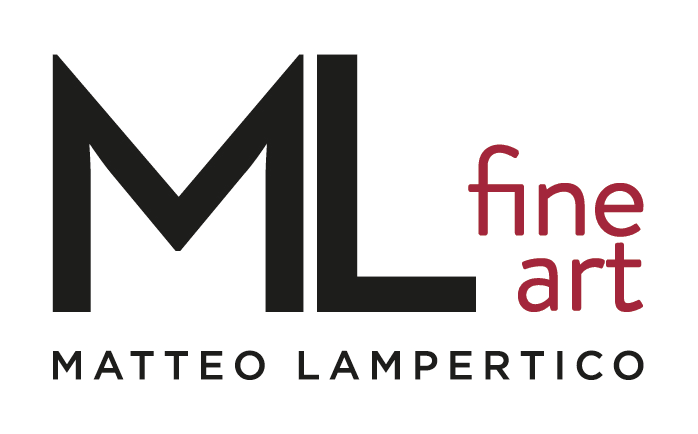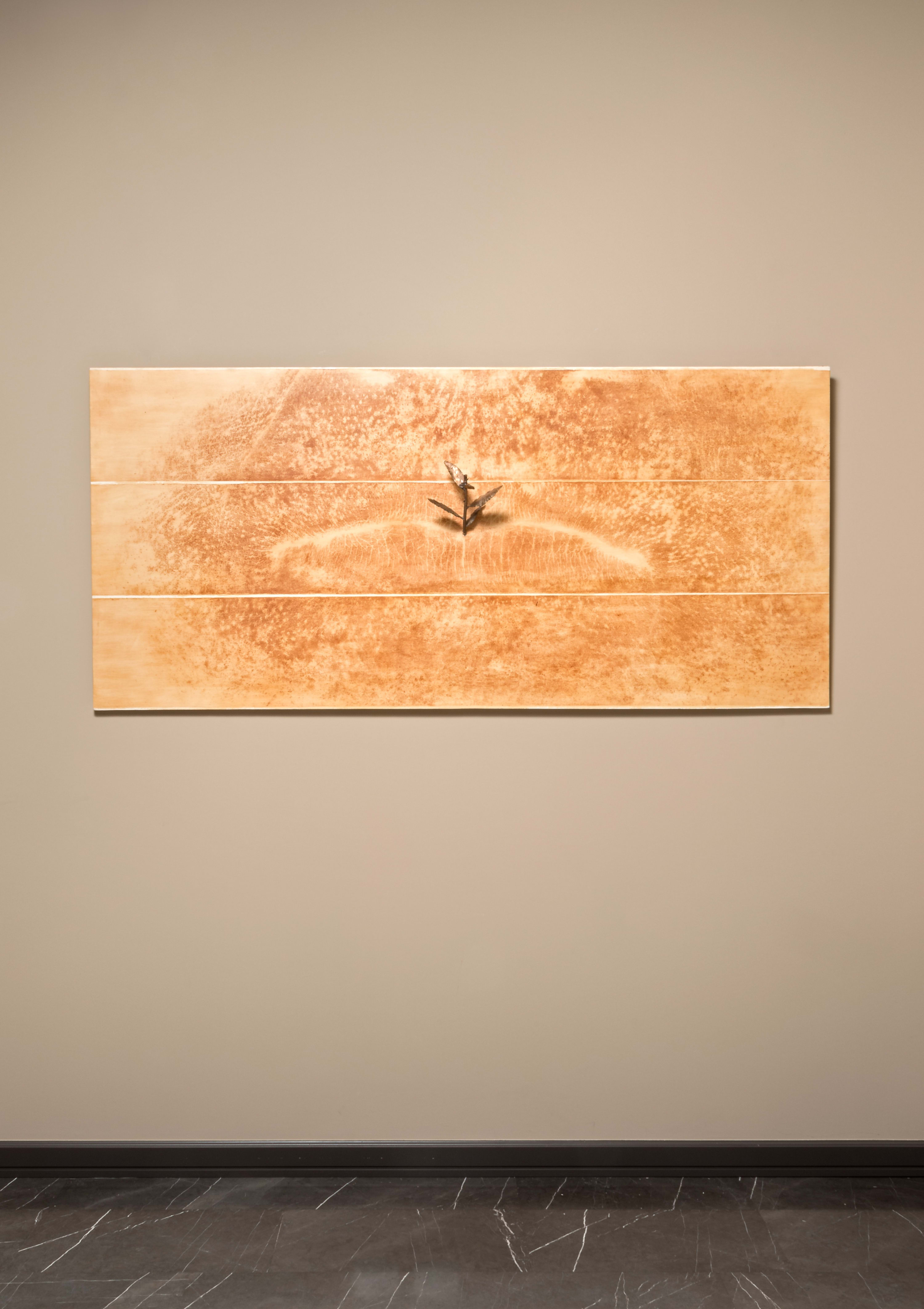-
-
Referring to Terra d'ombra, Giuseppe Penone explained that he used the technique of "helio-painting" developed as a form of pictorial photosynthesis, intended to reproduce an imprint of the artist's epidermis on the canvas.
Penone's early works often focused on the relationship between man and nature. Later, the artist's own body became more and more a protagonist of his work, culminating in 'Unwinding One's Skin', created in 1970 and exhibited at Documenta 5. This work consisted of segmented images of the entire surface of Penone's body developed photographically on the glass of a window. For Penone, the skin is the border between each individual and the world, and it becomes a recurring theme in his artistic research.
The substance added by Penone to the surface of Terra d'ombra is brown earth, used as a pigment, which adds the further advantage of introducing a wordplay into the title. Through the use of this pigment, a poetic interface is created between nature and man, art and the world around us. As a final touch, Penone added bronze leaves to the surface, creating further shadows and also underlining the connections between nature and art in his work. The leaves, cast through the lost wax technique, are the result of another form of transformation, through which the most vulnerable and perishable organic material has been turned into solid metal.
-
-

Pressione. Realizzato in occasione della mostra al Kunstmuseum, Lucerna (1977). Opera distrutta. © Archivio Penone
-

Frottage del muro. Realizzata nel 1972 presso l’abitazione dell’artista, Torino. Opera distrutta. © Archivio Penone
-

Spoglia d’oro su spine d’acacia – bocca. Galleria Nazionale d’Arte Moderna, Rome, Italy.
-
-
Riferendosi alla Terra d'ombra, Giuseppe Penone ha spiegato di aver usato la tecnica dell'"elio-pittura" sviluppata come una forma di fotosintesi pittorica, ideata per riprodurre un'impronta dell'epidermide dell'artista sulla tela.
Le prime opere di Penone spesso si sono concentrate sulla relazione dell'uomo con la natura. In seguito, lo stesso corpo dell'artista è diventato sempre più protagonista del suo lavoro, fino ad arrivare a “Svolgere la propria pelle”, realizzata nel 1970 ed esposta a Documenta 5. Quest'opera consisteva in immagini segmentate dell'intera superficie del corpo di Penone sviluppate fotograficamente sul vetro di una finestra. Per Penone, la pelle è il confine tra ogni individuo e il mondo, che e diventa un argomento ricorrente nella sua ricerca artistica.
La materia aggiunta da Penone alla superficie di Terra d'ombra è la terra marrone, usata come pigmento, che aggunge l'ulteriore vantaggio di introdurre un gioco di parole nel titolo. Attraverso l'uso di questo pigmento si crea un'interfaccia poetica tra la natura e l'uomo, l'arte e il mondo che ci circonda. Come tocco finale, Penone ha aggiunto delle foglie in bronzo alla superficie, creando ulteriori ombre e sottolineando anche le connessioni tra natura e arte nel suo lavoro. Le foglie, fuse attraverso la tecnica della cera persa, sono il risultato di un'altra forma di trasformazione, attraverso la quale la materia organica più vulnerabile e deperibile è stata resa in metallo solido.
Giuseppe Penone, Terra d'Ombra, 1998.
Past viewing_room




